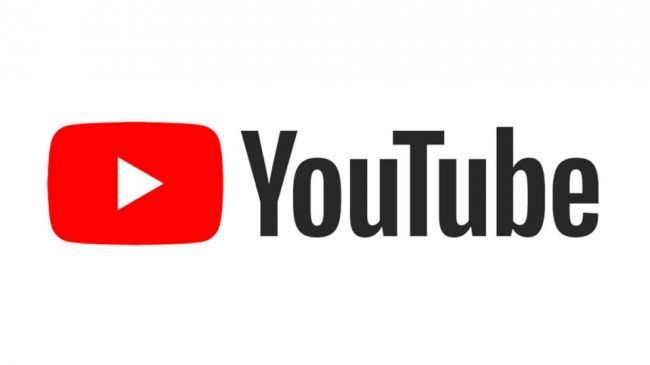
247. Beyond Values – Creating Explicit Leadership Expectations
Reading the Room
About this Episode
Ep. 247 – For all our coffee lovers, imagine your organization’s leadership culture as a finely brewed cup of coffee. When done right, it tastes rich, distinct and pure. But when you mix in different types of beans or even a splash of almond milk and half and half, that delicious cup starts to quickly turn into an off-putting drink.
Similarly, as your team grows and new leaders join your organization, each bringing their own “flavor,” the leadership culture can become diluted and fragmented—less bold, less recognizable, and less impactful.
In this episode, we explore what happens when leadership culture loses its essence, why it happens, and how to protect what makes your organization thrive.
Ramona breaks down:
- Why newly hired leaders often stick to their proven playbooks instead of assessing the new company’s approach
- How remote work makes it harder for leaders to pick up on the unwritten rules and norms
- What happens when different managers run their teams in completely opposite ways
- Specific solutions that actually work, with real examples from companies who got it right
This episode is perfect for anyone bringing in new leaders, joining a new company as a lateral hire, or trying to keep their leadership team aligned through growth.
Watch it on YouTube HERE.
Episode 247 Transcript:
0:00:00 Ramona Shaw: As organizations expand, they often bring in external leaders to manage their growing workforce. While these new managers or newly hired managers bring valuable experience, they can inadvertently contribute to something we call leadership culture dilution. This occurs when the original set of values and principles that guided the company’s early leadership becomes fragmented or or inconsistent across the organization.
0:00:30 Ramona Shaw: So in this episode, we’ll break down how leadership culture can be diluted, the impact on employees and organizational success, strategies to align leadership behavior with company values, and actionable steps for leaders to maintain a strong leadership culture. So this is important and relevant for you as a leader, as well as anyone in an HR position who is looking to grow and establish strong leadership across the ranks and the organization. Here are the two questions this podcast answers.
0:01:04 Ramona Shaw: One how do you successfully transition into your first official leadership role? And 2 how do you keep climbing that leadership ladder and continuously get promoted? Although the competition and the expectations get bigger, this show, The Manager Track podcast, will provide the answers. I’m your host, Ramona Shaw. I’m on a mission to create workplaces where work is seen as a source of contribution, connection and personality, personal fulfillment. And this transition starts with developing a new generation of leaders who know how to lead. So everyone wins and grows.
0:01:37 Ramona Shaw: In the show, you’ll learn how to think, communicate, and act as confident and competent leader you know you can be. Welcome to this episode of The Manager Track podcast. Let’s start off by painting a bit of a picture here that might sound familiar. So imagine a startup that has grown from 50 to about 200 people in maybe about two years. That original team had probably a pretty clear vision, some shared values.
0:02:05 Ramona Shaw: Often these are organic values and often somewhat of a distinctive leadership style that made that company special. People knew what they could expect here and how this company is run. But as they scaled, they needed to bring in more experienced managers from the outside experts, people who’ve already run bigger companies, people who have grown startups in the past. And this is exactly where things get complicated when it comes to having a strong leadership culture. Because what happens with this organizational growth?
0:02:38 Ramona Shaw: The very things that you needed in order to scale to grow, like hiring experienced external leaders, can then start to threaten the cultural foundation that made your company successful in the first place. So let’s break down why this happens. When companies are small, leadership culture again develops organically. The founding team works closely together, often in the same space, sharing ideas and approaches.
0:03:06 Ramona Shaw: They develop an unwritten playbook of how we do things here and how we lead. But as organizations grow, particularly in today’s remote and hybrid working environments, this natural transmission of culture becomes increasingly difficult. So let’s take the case of Etsy. Etsy in their early days they had this strong engineering led culture, but a high focus on craft and creativity. That’s what made Etsy. Etsy was a great product for the in terms of user experience, filtering and scalability.
0:03:42 Ramona Shaw: It also really highlighted that crafty creative aspect. But as they scaled, they brought in leaders from large tech companies to help manage their growth. Now, these leaders again brought in valuable experience, but they also brought in different perspectives on leadership. And sometimes these clashed with Etsy’s original creative culture that they considered to be the thing that made them successful in the first place.
0:04:11 Ramona Shaw: So it might be the out of the box thinking. It might be how to distinguish, present their products and their product line where other leaders came in and wanted to simplify and streamline everything. Similarly, another example you’re probably familiar with is Netflix. Netflix was early on known for its freedom and responsibility culture. And Netflix made sure that all leaders understood and embodied these values.
0:04:38 Ramona Shaw: They did that a through rigorous hiring and then very diligent onboarding and continuous feedback. What we see more typically happens is that the delusion happens and companies and leaders don’t recognize it until they see results from engagement surveys. Until they speak to employees in exit interviews and realize how they describe their leader, that’s not how we think we should lead here. When they see the company being described on Glassdoor in a way that doesn’t represent their values, or when they simply start to observe leaders and they think, wait a second, that’s not how we see it. That’s not how we lead.
0:05:19 Ramona Shaw: And only after they had a number of these experiences will then they seek that conversation and hopefully take action on it. Either by hiring a leadership development company like We Are or cova, or by relying on a strong internal HR team that has the capacity to tackle this. But let me get back to that leader. The leader who comes in from an other organization. And you might be the one who observes external leaders coming in, right? Or you might actually be that leader who joined an organization at a later stage.
0:05:54 Ramona Shaw: So when you are an experienced leader joining a new organization, you face pressure. Many of us find ourselves in such situations wanting to prove ourselves fairly quickly. Now we know and many of us have learned, like in the beginning, we’re, you know, listening, we’re observing, but then it’s all about, how do I drive business results? So, so they’re hired and they know that, or you were hired and you know that because of your track record. And your experience.
0:06:23 Ramona Shaw: So when you come in and you already have led teams in the past, you come in with your own playbook, the approach that has worked well for you in previous roles. And we’re not saying any of that is bad. The problem is that they might not. These playbooks from the past may not align with the leadership culture, the distinct leadership culture that made this new organization successful in the first place and that the original leaders or the founders or the CEOs really wants to hold on to and continue to foster.
0:06:58 Ramona Shaw: And so just to continue going down this rabbit hole, by the way, something that can be even trickier is that if that newly hired leader joins with a great sense of confidence in their own ability, right? So this confidence, while valuable, can then actually lead them to be reluctant to proactively look to adopt the new organization’s leadership norms. Because we have this bias for action, this bias for results and impact early on.
0:07:26 Ramona Shaw: So for many leaders, it’s simply not a priority for them to pay attention to the leadership norms, to ask their peers and senior leaders to better understand any leadership related expectations. If you’re in that position, it’s not your fault. This is how expectations for new leaders are set. And it may simply not be aware, aware of the importance of that. Now I’m sure you’ve picked up on the fact that it’s really important for leaders to be in, tuned and pay attention to what are those leadership norms, what are those expectations and for organizations to make sure that they support, train onboard, develop leaders in alignment with their desired leadership culture.
0:08:07 Ramona Shaw: But let’s talk about the impact of a diluted leadership culture on the employee experience and organizational performance. When different leaders operate with different playbooks, it has numerous negative effects on both employees and organization at large. So imagine being an employee who’s recently reassigned to a new role and now you work somewhat closely with two managers. One is your director manager. And what that really means is you know that person is going to be the one who’s going to provide your performance review. If you want to talk about a promotion or of anything else sort of official that happens, you know this person is the one to go to.
0:08:50 Ramona Shaw: Now you also work very closely with an other manager in your organization and we would call that maybe a dotted line that you poured into. It could also be that it’s simply a key stakeholder, someone that you know you have to build a pretty strong relationship with. You want them to see you in a positive light. You want them to think of you as a high performer. Now you’re in that new role, and within a couple of months of being in this role, you realize that actual basic things, such as one on ones goal setting, prioritization, feedback, conversations, how to make decisions, or how much decision making autonomy that you’re being granted are completely different between those two.
0:09:31 Ramona Shaw: And this inconsistency creates problems. So first, it is confusing about what good looks like and what a manager and what an employee could expect. When one manager emphasizes autonomous decision making and flexibility and the other one wants to have this tight control, you’re starting to get mixed messages about what the organization truly values. Secondly, it can also create perceived unfairness if one team, for example, has regular career development conversations and another one doesn’t.
0:10:09 Ramona Shaw: One team has access to coaching, leadership development, and their manager really invests in their growth and supports all kinds of requests that employees make for their professional growth, or encourages them to go sign up for workshops and trainings and so forth, while the other manager doesn’t care about it and kind of works with this attitude that everyone’s just got to learn on the job, employees will naturally start to feel that opportunities for growth aren’t fairly distributed across the organization, and that is a huge factor when it comes to employee motivation.
0:10:45 Ramona Shaw: That kind of friction and misalignment may seem small, but the ripple effect of that and the fact that this is going to start to happen across the organization comes with a huge cost. On top of that, the rise of remote and hybrid work has actually amplified these challenges in ways we’re really only beginning to understand. So in a traditional office setting, newly hired leaders could at least observe their peers, right and pick up on cultural cues through osmosis.
0:11:19 Ramona Shaw: But in a remote environment, these natural learning opportunities are greatly reduced. To share an example here, companies like GitLab, which has been remote since its inception, put a huge emphasis on documenting their leadership expectations and practices. And they’ve actually done a really good job avoiding that leadership culture dilution. As a result of that, when you go online and you search for GitHub’s leadership principles and values and so forth, you’re going to have access to a vast number of resources that highlight how much emphasis GitHub put on this.
0:11:58 Ramona Shaw: They have learned that in a distributed environment, you can’t rely on informal culture transmission nearly as much as you could in office setting.
0:12:09 Ramona Shaw: Transitioning from being an individual contributor and I see into your first leadership role is one of the biggest transitions that you’ll make in your career. Because the things that made you successful as an IC will not be the same things that will make you successful as a leader and especially in a new role when all eyes are on you. When you know your boss wants you to succeed and is watching closely, your peers are having an eye on you. Your team members are keen to figure out how to work with you and whether or not they can trust you during this time. By the way, whether or not you’re a first time manager or you’ve led teams in the past, but you’re in a new role as a new manager.
0:12:50 Ramona Shaw: To the team or even to the.
0:12:52 Ramona Shaw: Business, this is a time in which you don’t want to wing it. Go into such a situation with a plan and with specific tools that will help you build trust and gain the.
0:13:01 Ramona Shaw: Respect of your co workers.
0:13:03 Ramona Shaw: In our new Manager Toolkit, we’ll give you guides, tools, checklists and lots of things that are important for any new manager to keep in mind. Head on over to arcova.org free toolkits.
0:13:17 Ramona Shaw: To grab your copy.
0:13:18 Ramona Shaw: You can also find that link in.
0:13:20 Ramona Shaw: The show notes or the captions.
0:13:21 Ramona Shaw: I’ll see you over there.
0:13:23 Ramona Shaw: So you need to make things a lot more explicit and more accessible and to continuously reinforce it or bring it back to the top of your leaders minds. So speaking of that and using GitHub as an example, the company who did this really well, let’s talk about some strategies and solutions on how to address this. There are numerous ways that organizations can prevent this Culture Dilution One of the most effective ways to maintain your leadership culture is to make expectations explicit. I think I’ve said this a few times now. I’m honing in that point.
0:13:58 Ramona Shaw: This goes beyond the general company values and principles. I am referring to specific leadership norms and behaviors. At arcova, we like to call this a leadership charter. You might hear other words sometimes refer to it as a playbook, but the point is develop a document that clearly outlines the organization’s expectations for leaders. This charter needs to cover what are key responsibilities of leaders. Do we actually even have a mutual understanding of what leadership really means in this organization?
0:14:35 Ramona Shaw: And then what are these responsibilities? What are the values and the principles? And ideally you deduct them from the company values, but they are going to be more specific to leadership. What are the behaviors and the norms that we expect from leaders? What are some tools and frameworks that we present and train our leaders on to create and establish consistent leadership practices? So that’s one Develop that charter.
0:15:04 Ramona Shaw: Number two, invest in leadership training. This is crucial in order to align both the new and existing leaders with the organization’s expectations. For example in our leadership accelerator program, which is our 12 week new manager training, we provide this specific program to companies who have all their newly promoted mentors go through it, so that from the beginning they have common language, common tools, common values and principles that are being reinforced and shared throughout the program.
0:15:40 Ramona Shaw: They have this opportunity to create shared experiences and have a dialogue of what leadership looks like for them and how they’re demonstrating it. We also offer refresher courses to ensure that these concepts stay top of mind. And even managers with existing experience but have been hired are invited to join these roundtables or refreshers to so that there is this continuous alignment happening regardless of who is coming in and going out of the organization.
0:16:09 Ramona Shaw: So it is about committing to a program, to a set of resources and tools that are being made available to leaders and are then continuously highlighted again to keep the alignment going. Now, if you’re in hr, you might say, okay, we’re pretty good with our new managers. I think it’s the mid level managers or the senior managers that actually need help. The same is true here and at arcova we provide similar programs for mid and senior levels too, where we establish what does the team charter look like, what are the values and the principles and then what are the sets of frameworks and tools that you really want to hone in on that demonstrate empathy, that demonstrate how to lead others through a coaching approach that provides a sense of autonomy and allows for innovation and creativity.
0:17:00 Ramona Shaw: Is it how to set professional development goals? I just spoke with an organization where I’m working with very senior leaders and what we discover early on is there’s no consensus on how the company sets goals for the year, for example, and sets professional development plans. Each leader does it or doesn’t do it, or does it sort of have way or if they do have a framework, someone uses the smart goals, another one uses an OKR template, but there’s no alignment, no clear guidance from the company on how to go about it.
0:17:35 Ramona Shaw: And of course many of these companies, especially the fast growing startups, that may just not be something that has been top of mind and it’s kind of work. But now they’re starting to get into this space where they realize, man, we’re all over the place and we need to realign and ensure that all the people that we hire, all the leaders that we bring in, have the same understanding in order to avoid friction, demotivation, unwanted churn, and the list goes on down the road.
0:18:04 Ramona Shaw: Because we didn’t manage this well, we didn’t formulate and communicate and support our leaders in having a more cohesive and aligned approach. And so, just to briefly recap that point, ensure human resource practices reinforce the desired leadership culture culture. That means the leadership expectations that flow into both the hiring, the promotion, the onboarding processes. Make sure that the performance reviews incorporate these leadership norms that we’ve set out so that leaders are actually measured or receive feedback on whether or not they demonstrate those norms could also be incorporated into three 60 degree assessments to check how well we’re doing and where might be the weak spots that you want to address first, and then create a bit of a roadmap for realignment and eliminating this delusion over the course of a year or so.
0:18:57 Ramona Shaw: And one more thing, engagement surveys should obviously also check on these leadership principles and norms. One more suggestion in terms of strategies to address this is to ensure dialogue about leadership across the organization. Even holding regular leadership forums, fireside chats to discuss challenges, best practices, ideas and principles of senior leaders, or to have groups of leaders come together as peers to talk things through.
0:19:26 Ramona Shaw: To create mentorship programs where you pair a new joiner or a new leader with a more experienced leader in the organization. It also means to establish channels for feedback on leadership practices to make sure that is all done in the interest of the organization and the interest of the leader and leadership expected to be receiving feedback on how well they demonstrate the organization’s values in that sense. So these are all the different ways that this illusion of leader leadership culture can be addressed.
0:19:59 Ramona Shaw: Now I want to quickly take a look at how you could address it depending on where you are in the organization. For HR and senior leadership, this is about actually developing the leadership principles and the expectations to ensure that you have these frameworks and practices in place. It means to implement regular assessments, feedback mechanisms, and to ensure that your incentive structures are well aligned.
0:20:23 Ramona Shaw: If you are a department head, you could actually even if the company doesn’t do it, you could create department level leadership agreements and then you could facilitate regular leadership alignment sessions where you talk about how to demonstrate these values. You can then mentor new leaders in the organization and overall be really on the lookout on monitoring and addressing cultural inconsistencies.
0:20:49 Ramona Shaw: You might also make sure that that feeds into the hiring and onboarding process for individual leaders who aren’t managing other managers or a department. My suggestion to you is to actively seek to understand the organization’s leadership culture. So ask questions about leadership expectations, share and discuss approaches with peers, collect feedback from team members about leadership inconsistencies that they may observe, get curious and proactively try to understand what the company expects, were their potential gaps, and how that aligns with your idea of leadership.
0:21:34 Ramona Shaw: So let me do a quick recap. We talked about what a diluted leadership culture is, why it happens, and then we talked a good amount about strategies and solutions to address it, both in terms of what to do and in terms of who could be doing and addressing it in which way. Now let’s look a bit into the future. As organizations continue to grow more complex and more distributed, the challenge of maintaining a leadership culture alignment will only become more critical.
0:22:09 Ramona Shaw: So the companies that treat leadership culture as a core strategic priority, not just a nice to have. At the end of the day, great leadership isn’t about individual brilliance. Right. It’s about creating a cohesive environment where everyone can thrive. So by addressing the leadership culture dilution, you’re not just improving management, but you’re laying the foundation for more sustainable growth and excellence across the entire organization.
0:22:42 Ramona Shaw: Our mission at ARCOVA is to create workplaces where people thrive, to develop leaders people want to work with. And while we work directly with leaders one to one and in groups, we also know and see the importance of looking at leadership more systematically across an organization. And that is something that can be initiated and developed top down from the C suite or hr, but it can also be bottom up.
0:23:11 Ramona Shaw: Doing something like this might not be part of your job description. Yeah. But do your part, which is to notice inconsistency, to build awareness around those to in your field of influence, to develop a better understanding of what are we expecting of leadership? What does good leadership look like for you, to inquire, to check in, to be curious, what are the expectations and what are the values? And also to assess are you aligned with those you might be working for an organization. You’re like, these values, these leadership values, I don’t even buy into, I disagree with them.
0:23:49 Ramona Shaw: And so you can challenge that, you can question it, but then you also have that information to recognize. I might never want to rise as a leader in this organization because I don’t want to represent what these leaders represent. If these leaders are very intentional and explicit, this is how we do things here and you realize you don’t like it, then this might just not be your place. But wherever you are in the organization, you can do your part to create more cohesion, more alignment, and a better, and most of all, just a better understanding of what the leadership culture is and what we aspire it to be.
0:24:31 Ramona Shaw: Thank you for tuning in to this episode of The Manager Track podcast. If you found this information valuable, please share it with your colleagues, with your friends, co workers. If you’re in hr, share it with your HR communities. Then join us next time for another episode of The Manager Track podcast so you can learn more strategies to elevate your leadership game. I’ll see you then. Bye for now. If you enjoyed this episode, then check out two other awesome resources to help you become a leader people love to work with.
0:25:00 Ramona Shaw: This includes a free masterclass on how to succeed successfully Lead as a new manager. Check it out@archova.org/ masterclass. The second resource is my best selling book, the Confident and Competent New Manager. How to quickly rise to success in your first leadership role. Check it out@archova.org/books or head on over to Amazon and grab your copy there. You can find all those links in the show notes down below.
REFLECTION & DISCUSSION QUESTIONS
- Think back to when you first joined your company – what leadership qualities drew you in, and do you still see them today?
- If a new manager asked you “how do we lead here?” what would you tell them? Could your teammates give the same answer?
- What’s one leadership practice you’ve seen work well in your team that you wish the whole company would adopt?
RESOURCES MENTIONED
- Learn how to turn your 1-on-1 meetings from time wasters, awkward moments, status updates, or non-existent into your most important and valuable meeting with your directs all week. Access the course and resources here: ramonashaw.com/11
- Have a question or topic you’d like Ramona to address on a future episode? Fill out this form to submit it for her review: https://ramonashaw.com/ama
- Schedule a strategy call with Ramona HERE.
OTHER EPISODES YOU MIGHT LIKE
- Episode 57 Attitude & Leadership
- Episode 105 Train Your Thinking to Become a Better Leader
WHAT’S NEXT?
Learn more about our leadership development programs, coaching, and workshops at archova.org.
Grab your copy of Ramona’s best-selling book ‘The Confident & Competent New Manager: How to Rapidly Rise to Success in Your First Leadership Role’: amzn.to/3TuOdcP
If this episode inspired you in some way, take a screenshot of you listening on your device and post it to your Instagram Stories, and tag me @ramona.shaw.leadership or DM me on LinkedIn at linkedin.com/in/ramona-shaw
Are you in your first manager role and don’t want to mess it up? Watch our FREE Masterclass and discover the 4 shifts to become a leader people love to work for: www.archova.org/masterclass
Don’t forget to invest time each week to increase your self-awareness, celebrate your wins, and learn from your mistakes. Your career grows only to the extent that you grow. Grab your Career Journal with leadership exercises and weekly reflections here: ramonashaw.com/shop
Love the podcast and haven’t left a review yet? All you have to do is go to ramonashaw.com/itunes and give your honest review. Thanks for your support of this show!
* Disclaimer: Shownotes may contain affiliate links. That means that I am awarded a small commission for purchases made through them, at no added cost to you.







